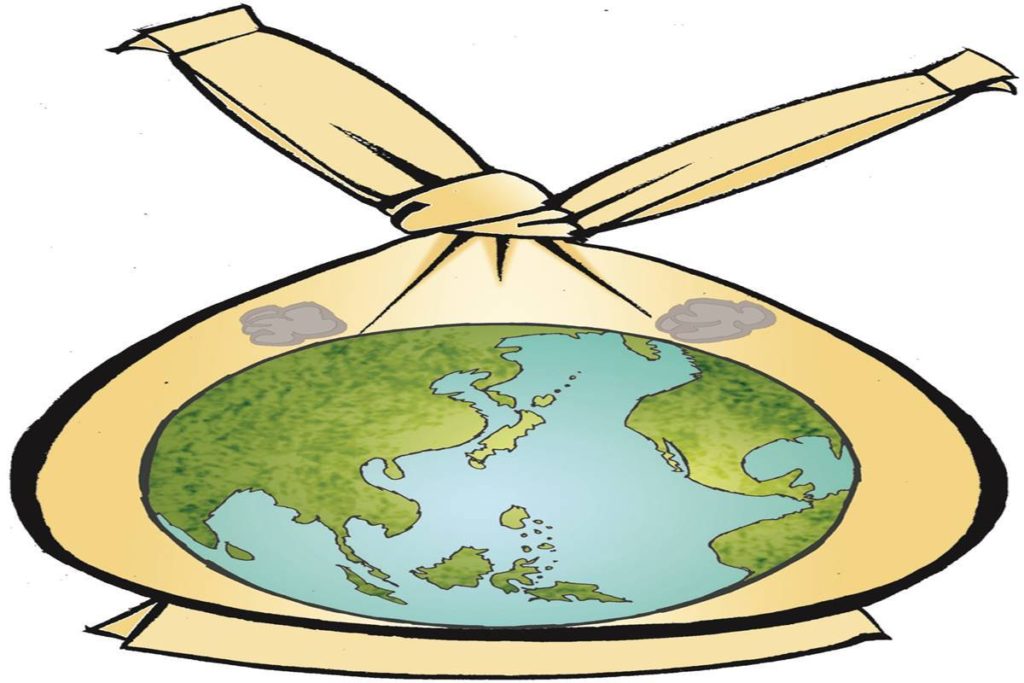As the world confronts a changing climate, India is a crucial unknown, and its decisions could either doom global efforts to curb climate emissions or jumpstart them
They developed several policies and laws related to DRE since it prioritised renewable energy at the national level in 2008.
Between now and 2027, India is set to become the world’s most populous country. No one questions its right to development, or the fact that its current emissions per person are tiny. But when building the new India for its 1.4 billion people, whether it relies on coal and oil, or clean, green energy will be a major factor in whether global warming can be tamed.
What is clear is that a low-carbon transition is in the country’s best long-term interests. India is extraordinarily vulnerable to climate change, with high baseline temperatures that make it particularly sensitive to additional warming. It also has a long coastline susceptible to intensifying cyclonic storm surges and sea level rises. Adding to these are the human-made factors of runaway pollution, a vast informal economy, unplanned development, and lack of disaster preparedness.
Many recent natural disasters highlight and foreshadow India’s heightened risk from the impacts of climate change exacerbated by its developmental choices. The heat waves of 2015 and 2016, the extreme flooding in Kerala in 2018 and 2019, the devastation in the Sundarbans by Super Cyclone Amphan in 2020, and the 2021 Uttarakhand landslides and flash floods. These have not just extracted heavy tolls on lives and livelihoods, but also caused extensive damage to infrastructure such as roads, dwellings and electricity grids.
The missing piece of the climate adaption puzzle
In the coming years, India will need policies that not only lower pollution and carbon emissions, but also alleviate energy poverty and create jobs for its growing workforce. At the same time, it needs to adapt to the climate changes that are already under way.
In this context, the mass roll-out of distributed renewable energy (DRE) technology throughout India is a panacea that can facilitate India’s development goals, by providing clean, reliable energy access to all, while limiting future greenhouse gas (GHG) emissions.
In doing so, India could follow the path of Senegal—where rolling out DRE has proven to be a key that has opened many locks. Akin to India, Senegal is highly vulnerable to extreme meteorological events and subsequently to the effects of climate change. They developed several policies and laws related to DRE since it prioritised renewable energy at the national level in 2008.
The policies being followed in DRE are aimed not only at increasing energy access for the underserved, but also to minimise environmental degradation and enhance adaptive capacity.
Thus, making DRE a logical policy response largely because it respects the sustainable development aspirations of India without any significant contribution to GHG emissions is vital. Despite its obvious benefits on both mitigation and adaptation fronts, why has it not been reserved a seat at the table at major climate finance negotiations?
The need to revitalise DRE investments
It is important to note that although significant progress has been made in funding large-scale renewable projects over the years, the investment trends are not entirely aligned to future needs. DRE projects are often overlooked by climate investors and policymakers because most distributed projects are small-scale and dispersed. Smaller investments in multiple projects increase the administrative and monitoring costs for investors. Unfavourable policy and regulations—including tax and subsidies regimes that favour fossil fuels—are also a deterrent in many cases.
Creating investment opportunities and realising ambitions of a sustainable energy mix will, however, require a radical shift in societal attitudes. The onus is on governments, businesses and investors—all of them together—to think long-term and take bold decisive steps to ensure securing a more sustainable future. To address the needs of the millions of people in low-income countries, who have no access to power, annual global investments must quadruple from $4.5 billion at present to $17.5 billion over the next 10 years. According to the World Bank, a climate-friendly investment of $1, on average, yields $4 in numerous, life-changing benefits.
With the virtual “Leaders’ Summit on Climate” on the Earth Day (April 22), and the COP26 scheduled for later this year, there are opportunities for world leaders to chart a new course or make amendments to their existing one, for their journeys towards achieving sustainability and adapting to climate change. The case for DRE—based on its potential to decarbonise energy supply and usage, climate resilience and to meet SDG 7—must be reinforced strongly at these summits.
As per the International Energy Agency, through 2030, renewable energy sources will power an estimated 60% of new access connections, mainly through mini grids. In coming years, India could well lead the way in demonstrating the impact of DRE on developing economies. The renewable-energy targets that India has set for itself—of installing 175 GW of clean energy capacity by 2022 and 450 GW by 2030—can be achieved much faster and with greater benefits, with the help of DRE projects.
Article Credit: financialexpress
